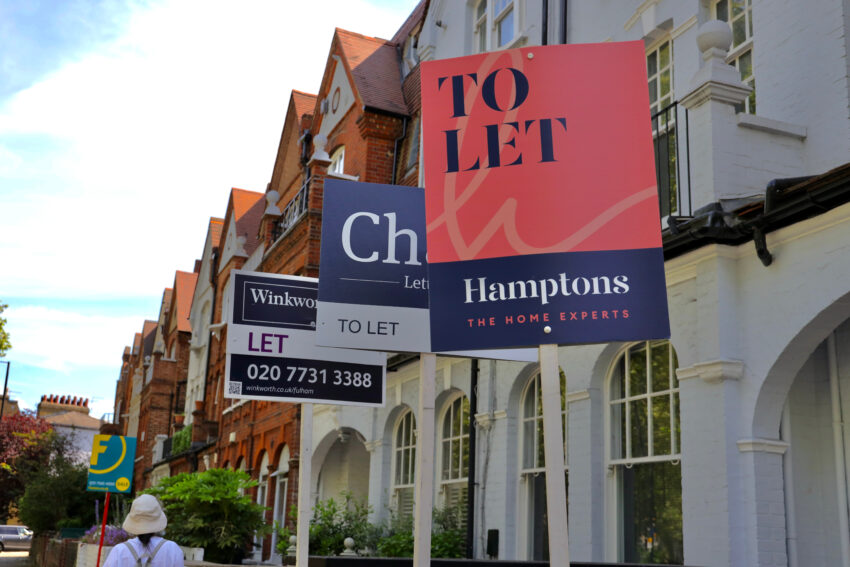
Thousands more families are renting smaller homes than they were three years ago.
Renters aged over 30 are more likely to move to cheaper areas as the cost of renting has soared and availability squeezed, Dataloft figures also show.
The consultancy said trade-offs were needed so people could stay in budget.
The National Housing Federation suggested more older people faced insecure, expensive tenancies.
The body, which represents housing associations, said older people’s health and wellbeing were suffering, and called for an increase in social housing.
Downsizing trend
Rents have been rising at a rapid rate, increasing at more than 10% in a year for new tenancies in some areas. Demand is high and the number of available homes has dropped as some landlords sell up.
As well as young, single people finding it hard to start out, families and older tenants have been affected.
Dataloft estimates suggest almost half of new tenancies taken on by families earning £30,000 to £70,000 in the first six months of this year were for one or two-bed homes.
In the first half of 2020, during the period covered by the first national lockdown, 57% of new tenancies signed by families on £30,000 to £70,000 a year were for homes with at least three bedrooms, according to Dataloft.
In the same period of 2023, that figure had fallen to less than 51%. That means thousands more families a year taking on smaller properties than in 2020.
Sandra Jones, managing director of Dataloft, said: “We believe these reductions in renters’ standard of living to be the direct result of the severe supply constraint that has driven up rents.
“When affordability is stretched, as it is for so many today, people make trade-offs in order to stay within a budget.”
The data also showed renters over 30 years old were more likely to move to a cheaper area than a higher value one when they changed home.
About a fifth of people aged 30 to 39 would move to a higher priced area while more than a quarter would move somewhere cheaper. Among the under 30s, it was the other way around with just under a third moving to a higher rent location in the previous 12 months.
Property portal Zoopla said a lack of availability of private rented homes was adding to the trend of families taking on smaller properties.
Executive director Richard Donnell said the slower buying and selling market meant greater demand in lettings, so people “can only find or rent what is available”.
According to the 2021 census, four in 10 people who rent through a private landlord or agency are in two-bedroom homes.
The National Housing Federation (NHF) said the number of people aged over 55 who were renting privately in England had soared.
Its survey of about 2,000 of these older tenants suggested that 42% of those asked regularly struggled to cover their basic living costs such as buying food and clothes or heating their homes.
The NHF has warned of a “huge spike” in the number of people entering their pension years who were living in private rental homes they could not afford. An extensive building programme of social homes was required, it said.
Greg Tsuman, president of ARLA Propertymark which represents letting agents, said landlords needed more incentives to stay in the sector and raise the number of private rental properties, such as changing the tax system.
“Fundamentally, the problem is that landlords are exiting the market when demand for rental properties continues to rise. Landlords are making a loss when rents are rising, and we need to address the root causes if we’re to solve this,” he said.
A spokesman for the Department for Levelling up, Housing and Communities said the Renters Reform Bill which is going through Parliament would deliver “a fairer, more secure, and higher quality private rented sector”.
He said ministers were committed to “increasing the supply of social rented homes”.
In the Autumn Statement, Chancellor Jeremy Hunt ended the freeze on the Local Housing Allowance, which has been in place since 2020. It determines how much help people who rent privately get towards the cost through housing benefit or universal credit. It will now be worth 30% of local market rents.
Angela Rayner, Labour deputy leader, said they had a housing recovery plan to “jump-start housebuilding” and “make renting fairer and more secure”.